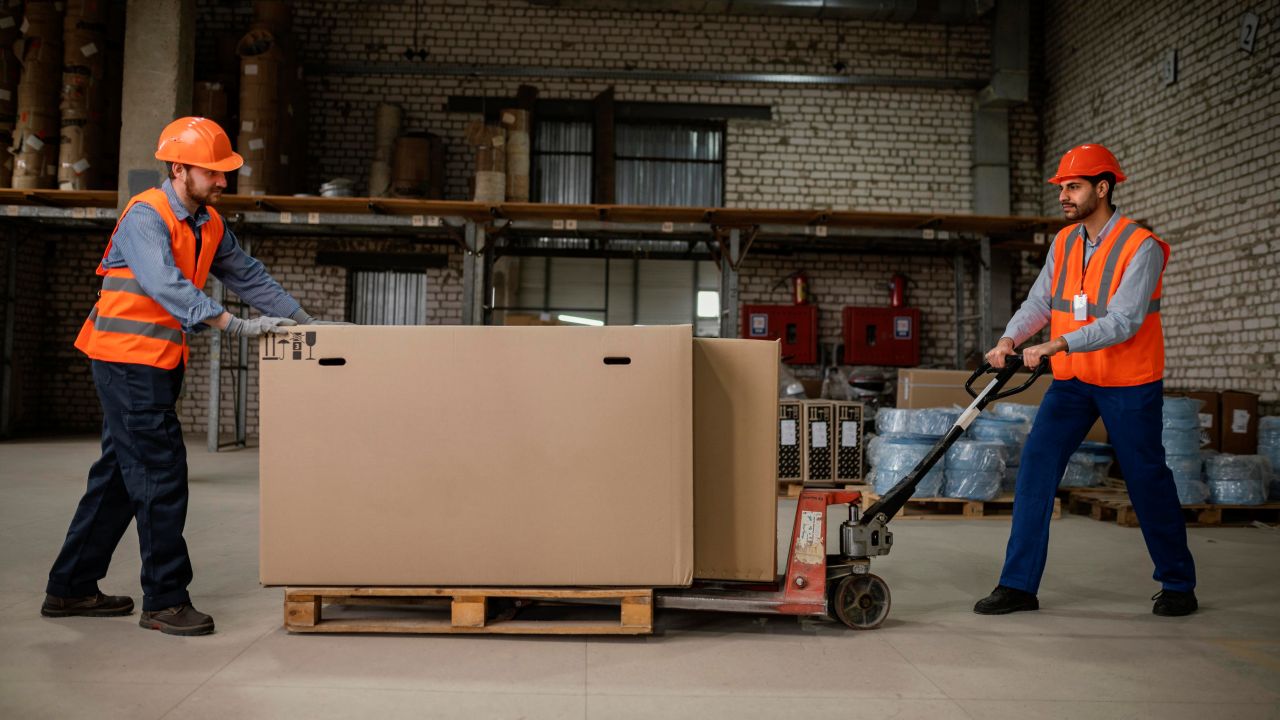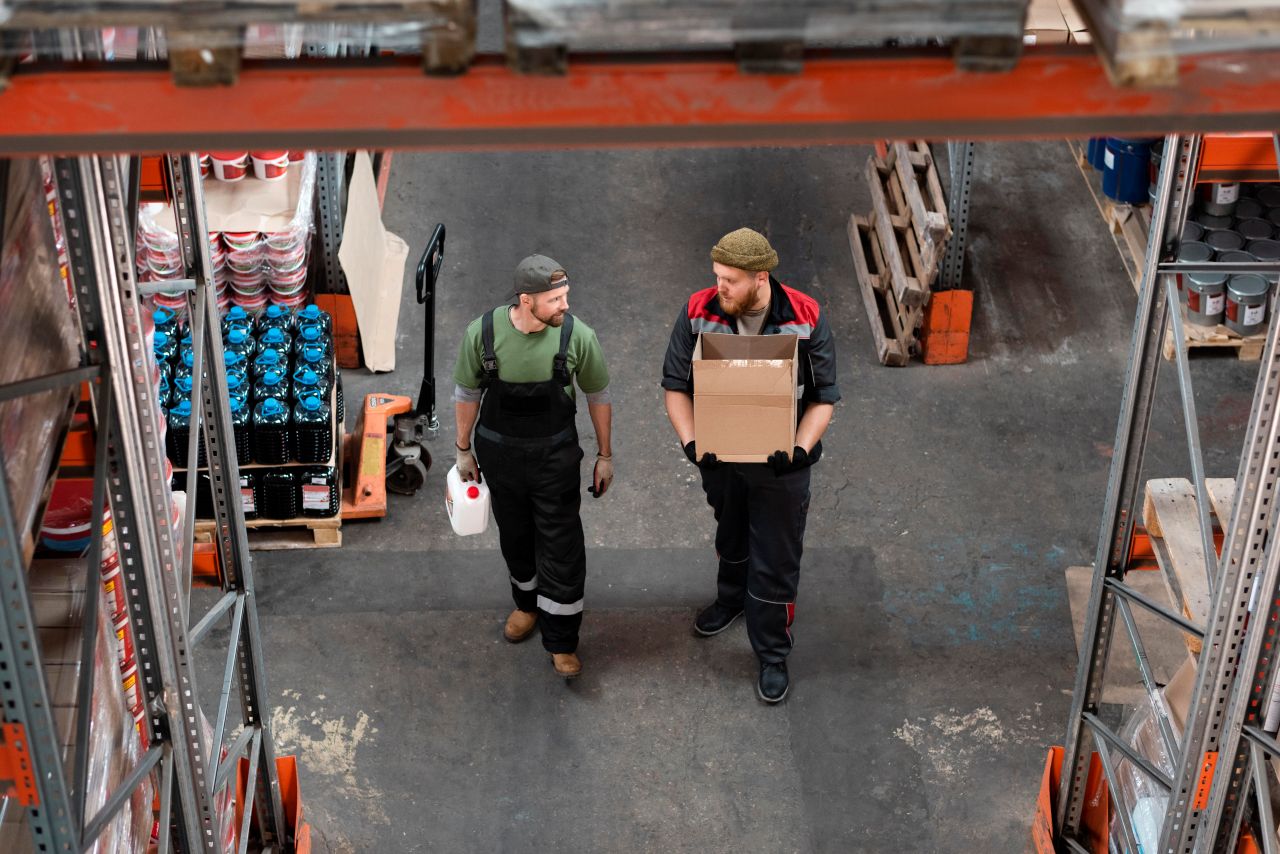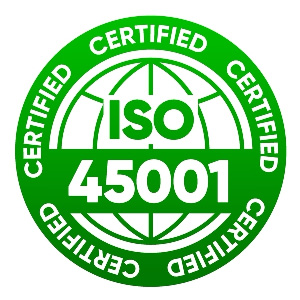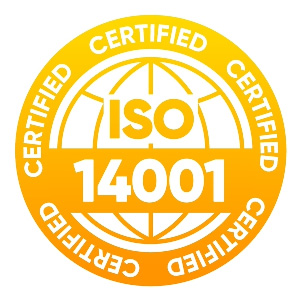Understanding Manual Handling in Today’s Workplace
Manual handling denotes lifting, pushing, pulling, carrying or lowering off by one's own manual or bodily strength. It seems to be easy, and it is. However, in case it is performed in the wrong way, it can cause severe health issues.
Improper handling subjects one to strained and sprained muscles and eventual back problems. Manual handling training should be one of the priorities of every business, small or large, to reduce these risks.

Why Manual Handling Courses Matter in Every Industry
Physical industries face higher risks of workplace injuries. They include healthcare, manufacturing, warehousing, retail, and construction. Understanding what is a manual handling course is essential to reduce accidents and ensure proper training.
Manual handling in construction and manual handling for healthcare workers is especially crucial. These settings require one to frequently move and lift items, and in cases of improper handling, they can result in short-term injuries and even long-term ones.
The courses help to diminish musculoskeletal injury risks and aid in injury prevention at work. They also promote a culture of employee safety awareness.
Don’t wait for an injury to happen. Contact Ireland T&T at +353 1 460 4829 or info@irelandtt.com and schedule your manual handling course today.
What Is a Manual Handling Course Packed with Power
A manual handling course provides workers with the knowledge and techniques to lift and carry safely. Not to mention the training on the posture, weight limit, motion mechanics, and mechanical aids used in case of necessity.
It aims to get rid of the bad habits. The safe lifting techniques aim at preventing injuries to the back, shoulders and joints. With the help of practical manual handling skills, workers gain knowledge on how they can apply less strenuous techniques. It helps in the accomplishment of the tasks and enhances their performance.
What You’ll Learn in a Manual Handling Course
The courses do center on theory and hands-on practice. Employees are taught to evaluate a load, forecast the lift, keep the proper posture and perform safe methods.
Here are core topics covered:
- Understanding physical handling techniques
- Safe movement of heavy or awkward objects
- Identifying risks before lifting
- Using aids to assist in lifting
These lessons develop safe manual handling practices. They apply to any industry.

Legal & Safety Guidelines
In Ireland, employers are legally responsible for minimizing manual handling risks. The HSA manual handling guidelines and the Safety, Health and Welfare at Work Regulations mandate that employees receive proper training.
Following manual handling legislation not only keeps workers safe but also protects businesses from liability. This makes health and safety training a non-negotiable investment.
Key Components
Certification proves that workers understand how to manage manual tasks safely. A certified course typically includes:
- Risk identification
- Load assessment
- Proper lifting mechanics
- Prevention of injury through technique
An officially recognized manual handling certification begins with understanding what is a manual handling course. It ensures your training is compliant with legal standards. Whether you’re based in Dublin or anywhere else, manual handling course Ireland options are available for all needs.
Courses typically last 2–3 hours, depending on the format, covering essential topics in detail. That’s the average manual handling course duration.
Choosing the Right Course Format
Some companies prefer remote options. Others need practical assessments. Ireland T&T offers both on-site safety training and manual handling course online formats.
Here’s how they compare:
Online vs On-Site Manual Handling Training
Feature | Online Course | On-Site Course |
Flexibility | High | Moderate |
Practical Exercises | Limited | Full Hands-On Practice |
Trainer Interaction | Basic | Full Engagement |
Ideal For | Remote/Office Teams | Manual Labor/Physical Jobs |
Certification Provided | Yes | Yes |

Common Risks
Without training, workers risk:
- Herniated discs
- Shoulder tears
- Muscle fatigue
- Chronic joint pain
Back injury prevention and ergonomic safety training are key components of the course. Training ensures every lift is a calculated, safe action, not a dangerous guess.
Risk assessments are also covered, teaching employees how to think critically about every task. These risk assessment procedures are vital for injury prevention.
Safe Pass vs Manual Handling - What’s the Difference?
Some workers confuse the Safe Pass program with manual handling. Here’s how they differ:
- Safe Pass: General health and safety for construction workers.
- Manual Handling: Specific to lifting and carrying risks across all industries.
Both may be required, but Safe Pass vs Manual Handling addresses different safety aspects.
Real Benefits of a Manual Handling Course
These benefits go beyond physical safety:
- Increased job confidence
- Fewer sick days
- Higher team productivity
- Better morale
What is a manual handling course? It's a key reason why employers notice improved staff performance and fewer insurance claims. Workers feel more secure and capable during their tasks after completing the training.
Who Should Take a Manual Handling Course
This training isn’t just for heavy lifters. It’s for:
- Warehouse and retail staff
- Health professionals
- Cleaners and caretakers
- Drivers and couriers
- Office workers managing stock or equipment
Every person involved in lifting and carrying safety tasks should be certified.
Course Duration, Certification, and What to Expect
Courses that explain what is a manual handling course typically run for 2 to 3 hours. It blends theory with practical demonstrations. Upon completion, workers receive a certificate valid for up to 3 years.
Expect:
- Visual learning
- Hands-on practice
- Trainer guidance
- Q&A sessions
The flexible manual handling course duration ensures you get valuable training without taking too much time from your day.
Workplace Impact of Manual Handling Training
Metric | Before Training | After Training |
Annual Injury Reports | High | Low |
Sick Leave Days | Frequent | Reduced |
Worker Satisfaction | Low | High |
Staff Turnover | High | Decreased |
These results show how training changes the entire safety culture of a workplace.
Protect your team and meet legal requirements with expert-led training from Ireland T&T. Book your session now by emailing info@irelandtt.com.
What Sets Ireland T&T Apart in Manual Handling Training
Ireland T&T is trusted by top companies across Ireland. Here’s why:
- Certified, experienced trainers
- In-person and online training
- Multilingual support
- Courses tailored to your industry
FAQs
Q1: Is a manual handling course required by law in Ireland?
Yes, according to Irish law, employers need to train all staff engaged in lifting or moving loads to be safe in terms of injury, since this is a mandatory training provided in Ireland.
Q2: How long does a manual handling certificate last?
A manual handling certificate is usually valid for three years. Then, employees ought to undergo a refresher course that keeps their safety standards and compliance in line.
Q3: Can I take the manual handling course online?
Yes, we offer fully certified online manual handling courses. These flexible options are ideal for remote learners and include video guidance and assessments.
Q4: Is manual handling training the same as Safe Pass?
No, Safe Pass general construction safety training and manual handling are limited to the teachings on safe lifting and moving. Some roles may require both certifications.
Q5: Who needs manual handling training?
Manual handling training is required of any worker who lifts, carries, pushes, or pulls loads as part of their task. These are healthcare staff, construction, retail, etc.
Q6: Do you offer on-site training?
Yes, we provide convenient on-site manual handling training for companies across Ireland. Sessions are tailored to match specific industry needs and risks.
Q7: Are practical demonstrations part of the course?
Yes, all in-person manual handling courses include hands-on practice. Learners apply safe lifting techniques in real scenarios with trainer guidance.
Conclusion
Understanding what is a manual handling course is the first step toward building a safer, stronger, and healthier workplace. It can enable the employees to raise and carry out loads safely and employ the right movements. So, they can make better choices that would prevent injuries. Trained workers become more confident and have a lower physical load. They contribute to a culture of safety and caring.
Manual handling training is not a passing regulatory requirement. It is a long-term investment in employee wellbeing, productivity and legal safety. The real-life advantages of such training will manifest themselves through reduced cases of injury. It also reduces employee turnover and stronger team performance.
Ireland T&T continues to be a trusted name in safety training across Ireland. Whether you need an in-person session at your site or prefer an online format, we’ve got the tools and experience to support you. Join the thousands of satisfied clients who’ve chosen to protect their teams.
Ready to improve workplace safety? Enroll in a certified manual handling course with Ireland T&T today. Email info@irelandtt.com or call +353 1 460 4829 to get started.
 EN
EN
 PL
PL
 PT
PT
 RO
RO


